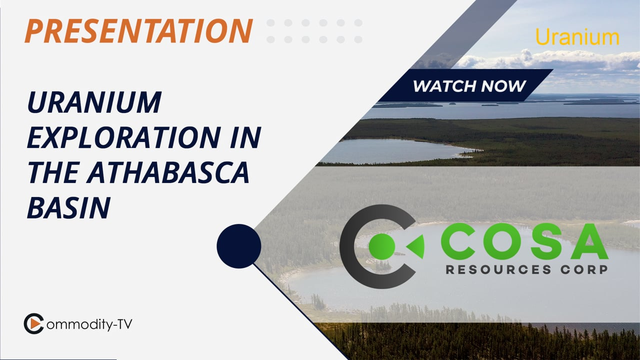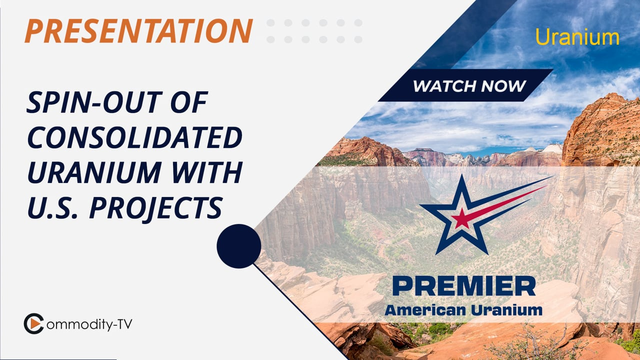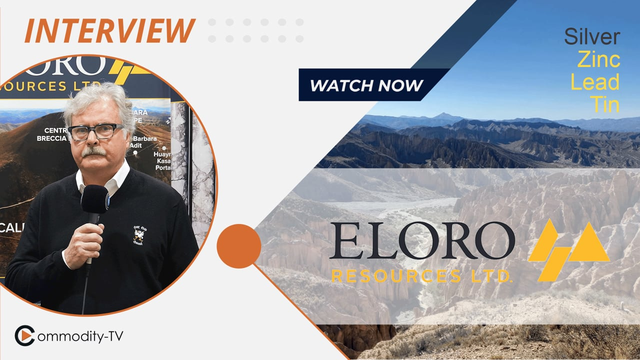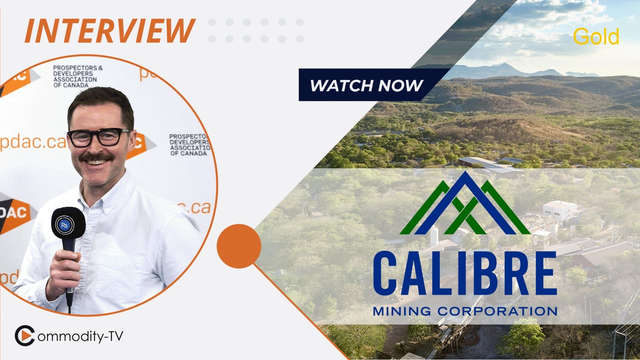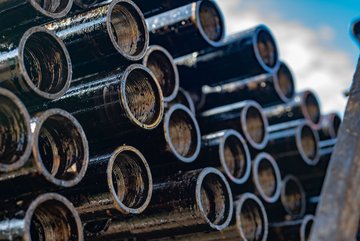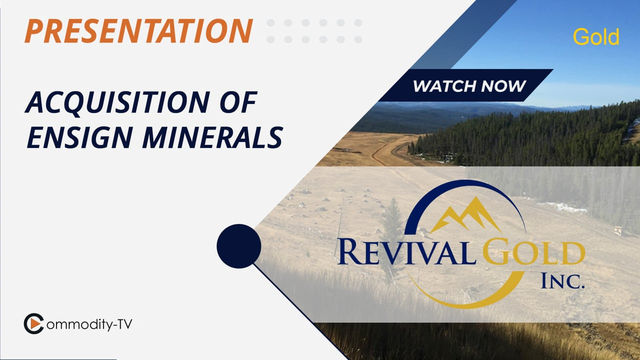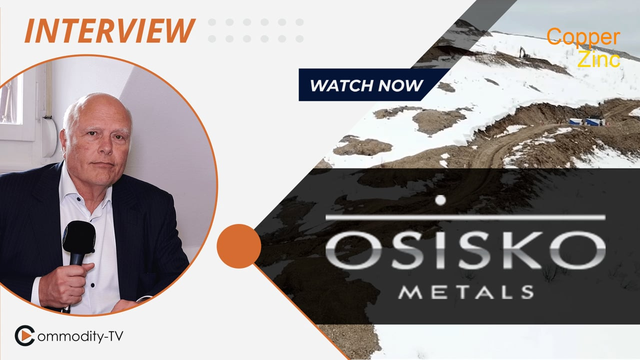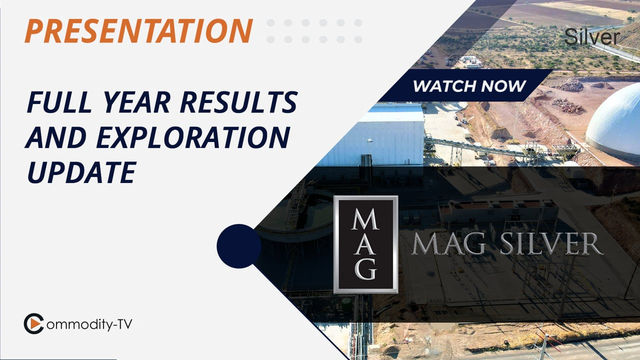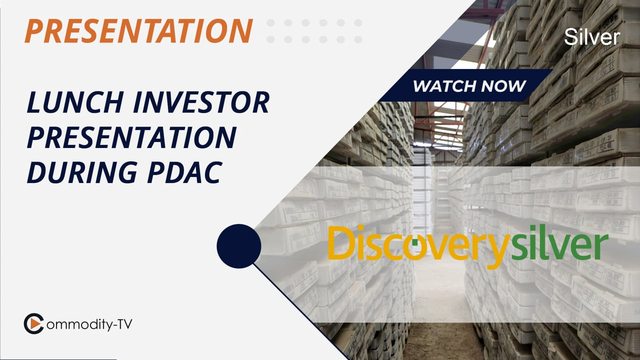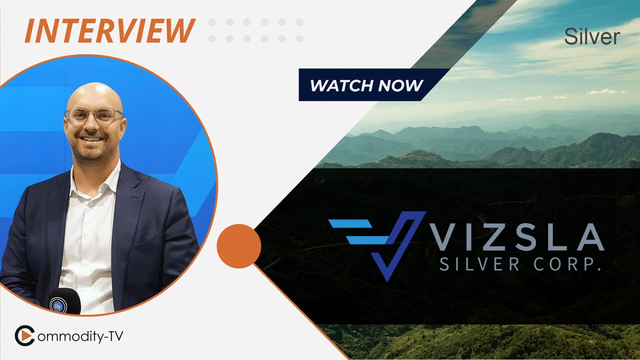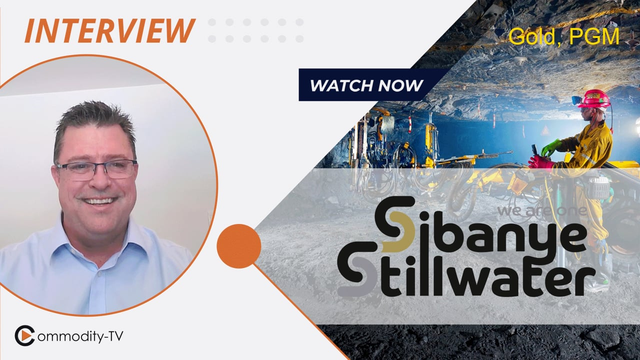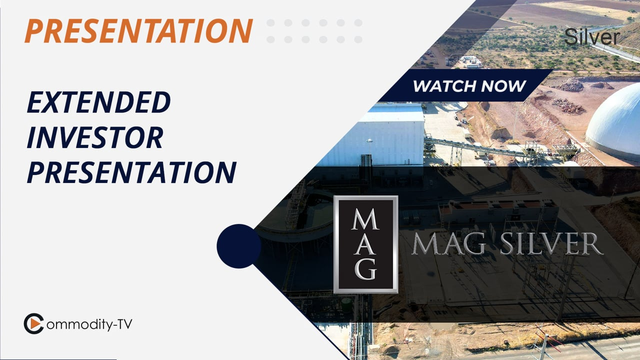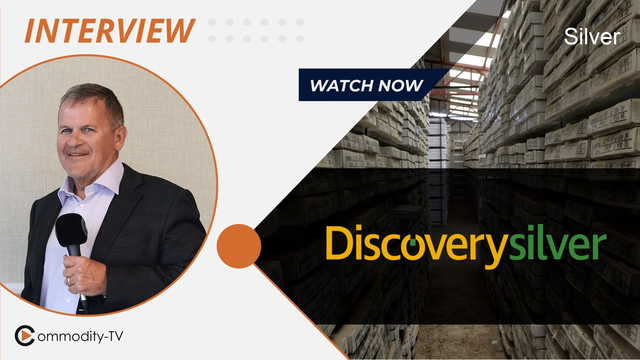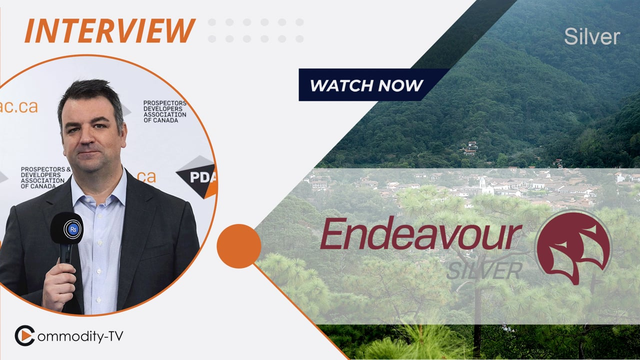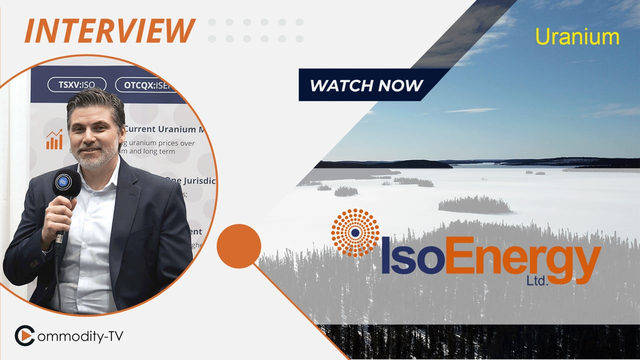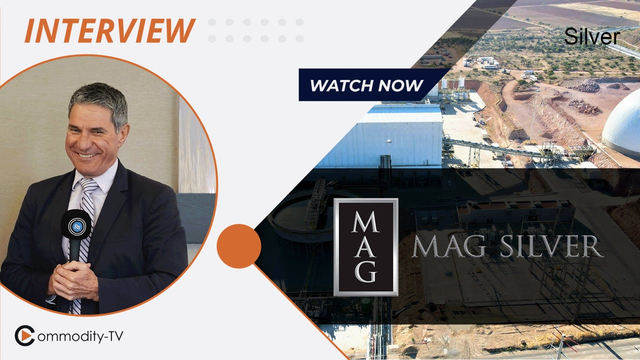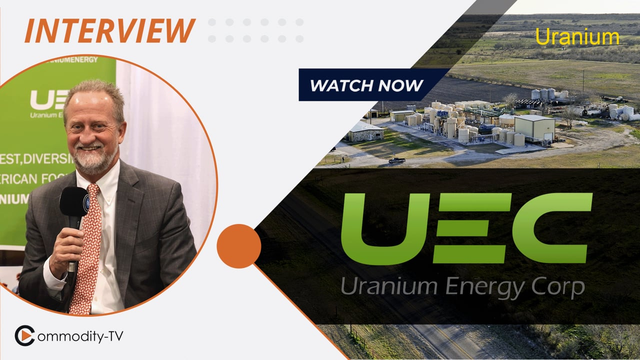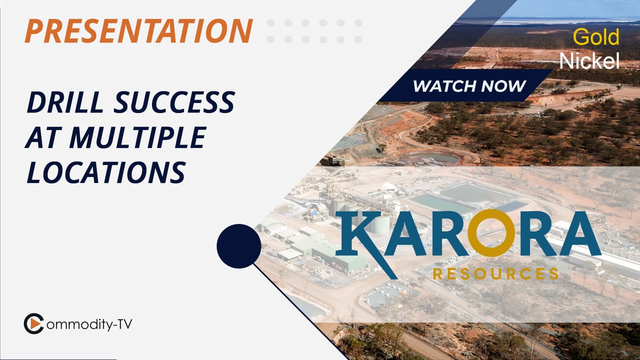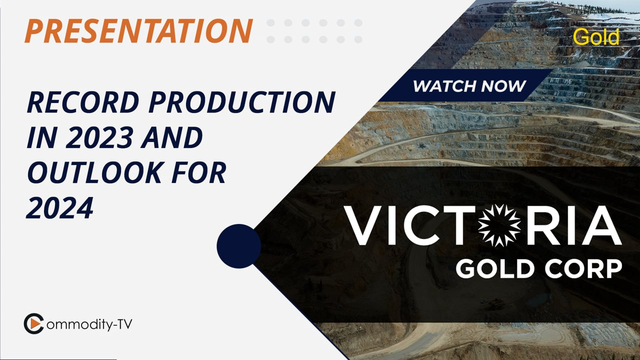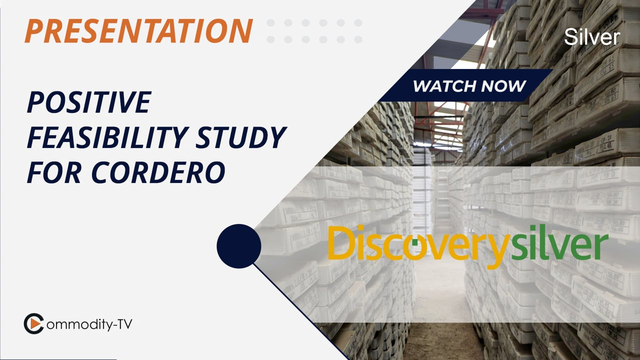West African gold explorer Golden Rim Resources Ltd (ASX: GMR; Golden Rim or Company - https://www.commodity-tv.com/ondemand/companies/profil/golden-rim-resources-ltd/) is pleased to announce results from geophysical surveys at its Kada Gold Project (Kada) in Guinea.
Highlights
- Golden Rim has received results for ground magnetic, gradient-array Induced Polarisation (IP) and pole-dipole IP geophysical surveys at Kada, covering both the Massan and Bereko prospects.
- Surveys identify multiple new drill targets for gold mineralisation outside Golden Rim’s 930,000oz[1] gold maiden Inferred Mineral Resource Estimate (MRE) area at Massan.
- Highest priority targets associated with the margin areas between highly resistive and chargeable IP anomalies and highly conductive and chargeable IP anomalies.
- The widest and highest-grade mineralisation within the MRE area at Massan generally occurs proximal to these margin areas.
- A priority target for the follow-up drilling is a strong untested IP anomaly that lies directly below the previous drill intersection of 29m @ 8.5g/t gold in KRC025 in the MRE.
- Golden Rim will test new targets in its upcoming drill program, scheduled to begin in Q4 2022.
- Infill drilling at Massan planned to enable Golden Rim to covert its Inferred MRE to Indicated category.
Managing Director Craig Mackay said:
“This geophysical survey data for Kada has helped our exploration team further understand the nature of mineralisation in the region and when integrated with our auger geochemical data, we generated multiple exciting new gold targets for the upcoming drilling program.
“We expect to recommence both RC and diamond drilling in Q4 2022. We will aggressively drill the Bereko prospect, as well as conduct resource extension around the maiden MRE at the Massan prospect.
“In addition, we intend to undertake infill drilling to convert a large portion of our MRE to indicated, which will lead into a scoping study in 2023.”
Geophysical Surveys
Golden Rim contracted SAGAX to complete ground magnetic (82km), gradient-array IP (75km) and pole-dipole IP (6.6km) surveys at Kada, focused on the Bereko and Massan prospects (Figures 1 & 2). The surveys were designed to enhance Golden Rim’s understanding of the structural controls and distribution of the gold mineralisation.
|
Figure 1: Imaged auger gold results highlighting the Kada Gold Corridor, with the ground magnetics and gradient-array IP geophysical survey areas (blue outlines).
Magnetic and gradient-array IP lines were spaced at 100m, with a 25m station spacing along the lines.
The shallow, ferruginous lateritic unit that covers the majority of Kada tends to obscure the magnetic signal of the underlying bedrock, however IP data has been immediately beneficial for increasing understanding of structural controls in the bedrock and identifying new drill targets in both Massan and Bereko prospects, discussed separately below.
Massan Prospect
The gradient-array IP survey showed two parallel, north-south trending chargeability highs that extend for 1km across the MRE area at Massan, and then extend a further 1km south of the MRE area. The westernmost chargeability high is spatially associated with some of the highest-grade gold and broadest mineralisation in the MRE area. To better understand this relationship, four east-west pole-dipole lines were completed across Massan (Figure 2). Two of these lines are in within the MRE area, and the other two lines are south of the MRE area across the width of the high-chargeability area.
Analysis shows that most of the encountered gold mineralisation is associated with elevated levels of chargeability of varying amplitudes related to areas of stronger sulphide mineralisation, as well as conductive anomalies, which are associated with thicker areas of clay related to deeper zones of weathering.
Gold mineralisation is often found near the margin between a wide, highly resistive and chargeable domain on the western side, and a highly conductive and chargeable domain on the eastern side. The widest and highest-grade mineralisation within the MRE area generally occurs proximal to these boundaries (Figure 3). This insight, coupled with auger drilling gold results, has allowed Golden Rim to further refine regional drilling targets along the Kada Gold Corridor at both Massan and Bereko.
Analysis in section using the pole-dipole IP data has also identified new drilling targets proximal to the MRE area. The pole-dipole lines within the MRE area (lines 1,224,040m and 1,224,200m North) demonstrated that areas of high chargeability (>15mV/V) adjacent to the oxide-transition boundary or the base of complete oxidation (BOCO) often contain significant gold intersections (Figures 4 and 5), including:
- KRC025 - 29m @ 8.5g/t gold
- KRC018 - 20m @ 1.6g/t gold
- KRC011 - 16m @ 2.1g/t gold
- KDH007 - 20m @ 1.1g/t gold
- KRC023R - 9m @ 2.2g/t gold (to End of Hole)
- KRC019 - 23m @ 1.2g/t gold
A priority target for the follow-up drilling is a strong untested IP chargeability high anomaly that lies directly below the high-grade intersection of 29m @ 8.5g/t gold in previous drill hole KRC025 and beneath the current MRE pit shell (Figure 4).
There is an untested chargeability high that occurs on the oxide-transition boundary just 150m west of KRC025, which has had no drilling to date (Figure 4). This target is also located outside the MRE pit shell and represents an opportunity to add additional ounces to the gold inventory at Kada.
There are multiple instances of elevated chargeability values occurring proximal to the BOCO on the most southern pole-dipole line, over 500m south of the current MRE extent. This area is >200m from any drilling and provides numerous new drill targets, and an opportunity for further resource extension and potential satellite gold deposits.
Figure 2: MRE area at Massan showing gradient-array IP chargeability, drilling collars (coloured by cumulative oxide gold mineralisation in metre x grams) and auger & soil samples. New pole-dipole IP lines are shown in blue
Figure 3: Massan Prospect showing resistive & chargeable gradient-array IP anomalies in red, conductive & chargeable IP anomalies in blue with auger gold anomalies and RC/diamond drilling.
Figure 4: 1,224,040mN pole-dipole IP line with significant intersections where high chargeability occurs proximal to the BOCO, and new drilling targets.
Figure 5: 1,224,200mN pole-dipole IP line with significant intersections where high chargeability occurs proximal to the BOCO, and new drilling targets.
Bereko Prospect
In Bereko, magnetic and IP data indicate there are NW-SE trending faults that correlate to breaks within the main N-S trending auger anomalies (Figure 6). Mineralisation generally occurs in areas of high chargeability as seen at Massan, but north of the faulting this relationship is less clear.
Figure 6: Bereko prospect chargeability map and recent RC drilling showing structural features
IP data has helped to identify multiple additional drill targets for investigation at Bereko, targeting high chargeability areas adjacent to a transition between high conductivity and high resistivity where there are broad bedrock gold anomalies (Figure 7).
Figure 7: Bereko Prospect showing resistive & chargeable gradient-array IP anomalies in red, conductive & chargeable anomalies in blue with auger gold anomalies and RC drilling.
Current Progress & Next Steps
Golden Rim’s next drilling at Kada is scheduled to commence in November 2022.
At Massan, there are two drilling programs are planned. The first is a resource extension RC program, focused on following up open intersections at the margins of the MRE (below KRC025 – 29m @ 8.5g/t gold), as well as on the open mineralisation to the north (KRC072 – 66m @ 1.0g/t gold).
The second and largest program is an infill diamond and RC drilling program targeting the highest grade and deepest oxide portion of the MRE, with the aim of converting a large proportion of the existing MRE from Inferred to Indicated category. In addition to this, 700m of trenching has been scheduled within this area to improve the geological understanding of the orientation and controls on the gold mineralisation (Figure 8).
At Bereko, Golden Rim plans to complete RC and diamond drilling to follow up on gold intersections obtained in the maiden RC drilling (11m @ 6.3g/t gold, 10m @ 5.6g/t gold, 27m @ 1.2g/t gold), and additional targets identified from recent auger drilling and the IP geophysical data.
-ENDS-
Contact Information:
Golden Rim Resources Ltd
ABN 39 006 710 774
Craig Mackay
Managing Director
+61 3 8677 0829
In Europe:
Swiss Resource Capital AG
Jochen Staiger
This announcement was authorised for release by the Board of Golden Rim Resources Ltd.
Competent Persons Statements
The information in this report relating to previous exploration results and Mineral Resources are extracted from the announcements: Golden Rim identifies additional oxide gold target areas at Bereko dated 14 July 2022; Golden Rim Hits 43m at 1.2gt Gold Outside Kada Mineral Resource dated 21 June 2022; Golden Rim Commences Infill Auger Drilling at Bereko Gold Prospects dated 25 May 2022; Golden Rim hits shallow high-grade oxide gold at Bereko dated 19 May 2022; Golden Rim’s Drilling Outside Kada Mineral Resource Area Delivers More Oxide Gold dated 11 May 2022; Kada Maiden Mineral Resource 930Koz Gold dated 3 March 2022; Golden Rim Discovers More Oxide Gold in Exploration Drilling at Kada dated 1 March 2022; Golden Rim hits 171.5g/t gold in sampling at Kada with multiple new targets identified dated 22 February 2022; Golden Rim Discovers Exciting New Zone of Oxide Gold at Kada – 66m at 1.0g/t Gold dated 17 February 2022; Golden Rim Expands Kada Bedrock Gold Corridor to 15km dated 30 July 2021; Major Bedrock Gold Corridor Extends to 4.7km at Kada dated 20 May 2021; Major 3.5km Bedrock Gold Corridor Confirmed at Kada dated 19 April 2021. These reports are available on the Company’s website (www.goldenrim.com.au). The Company confirms that it is not aware of any new information or data that materially affects the information included in these announcements and, in the case of the Mineral Resource estimate, that all material assumptions and technical parameters underpinning estimate continue to apply and have not materially changed.
The information in this report that relates to exploration results is based on information compiled by Craig Mackay, a Competent Person, who is a Member of the Australasian Institute of Mining and Metallurgy. Mr Mackay is a full-time employee of the Company and has sufficient experience that is relevant to the style of mineralisation and type of deposit under consideration and to the activity being undertaken to qualify as a Competent Person as defined in the 2012 Edition of the ‘Australasian Code for Reporting of Exploration Results, Mineral Resources and Ore Reserves’. Mr Mackay consents to the inclusion in the report of the matters based on his information in the form and context in which it appears.
Forward Looking Statements
Certain statements in this document are or maybe “forward-looking statements” and represent Golden Rim’s intentions, projections, expectations, or beliefs concerning among other things, future exploration activities. The projections, estimates and beliefs contained in such forward-looking statements necessarily involve known and unknown risks, uncertainties, and other factors, many of which are beyond the control of Golden Rim, and which may cause Golden Rim’s actual performance in future periods to differ materially from any express or implied estimates or projections. Nothing in this document is a promise or representation as to the future. Statements or assumptions in this document as to future matters may prove to be incorrect and differences may be material. Golden Rim does not make any representation or warranty as to the accuracy of such statements or assumptions.
ABOUT GOLDEN RIM RESOURCES
Golden Rim Resources Limited is an ASX listed exploration company with a portfolio of advanced minerals projects in Guinea and Burkina Faso, West Africa and in Chile, South America.
The Company’s flagship project is the advanced Kada Gold Project in eastern Guinea. Guinea remains one of the most under-explored countries in West Africa. Golden Rim has outlined a maiden Inferred Mineral Resource of 25.5Mt at 1.1g/t gold for 930Koz[2], the majority of which is shallow oxide-transitional gold mineralisation. Golden Rim is focussed on growing the Mineral Resource. Most of the 200km2 project area remains poorly explored and there is considerable upside for the discovery of additional oxide gold mineralisation.
The Company discovered and has outlined an Indicated and Inferred Mineral Resource of 50Mt at 1.3g/t gold for 2Moz[3] at the Kouri Gold Project, located in north-east Burkina Faso. Kouri covers 325km2 of highly prospective Birimian greenstones. Exploration has successfully located several high-grade gold shoots.
In northern Chile, Golden Rim has the Paguanta Copper and Silver-Lead-Zinc Project. Historically a silver mine, the Company has outlined a Measured, Indicated and Inferred Mineral Resource of 2.4Mt at 88g/t silver, 5.0% zinc and 1.4% lead for 6.8Moz silver, 265Mlb zinc and 74Mlb lead[4] at the Patricia Prospect. The Mineral Resource remains open.
At the adjacent Loreto Copper Project in Chile, Golden Rim has signed an Option and Joint Venture agreement with Teck Chile whereby Teck Chile can acquire up to a 75% interest in the project.
ASX:GMR
Market Capitalisation: A$13 million
Shares on Issue: 314 million
T + 61 3 8677 0829 | E [email protected] | goldenrim.com.au
Appendix 1: JORC Code (2012 Edition), Assessment and Reporting Criteria
Section 1: Sampling Techniques and Data
Criteria | JORC Code Explanation | Explanation |
Sampling Techniques | Nature and quality of sampling (e.g. cut channels, random chips, or specific specialised industry standard measurement tools appropriate to the minerals under investigation, such as down hole gamma sondes, or handheld XRF instruments, etc.). These examples should not be taken as limiting the broad meaning of sampling. | Geophysical Surveys Independent contractor: SAGAX Data Collected: Magnetics, Induced Polarity (IP) and pole-dipole Total Line kilometres: ground magnetic 82km, IP 76km, pole-dipole 6.6km. Line Spacing: 100m Station Spacing: 25m Traverse Line orientation: 90° |
Include reference to measures taken to ensure sample representivity and the appropriate calibration of any measurement tools or systems used. | Not applicable for geophysical survey. | |
Aspects of the determination of mineralisation that are Material to the Public Report. | ||
Drilling Techniques | Drill type (e.g. core, reverse circulation, open-hole hammer, rotary air blast, auger, Bangka, sonic, etc.) and details (e.g. core diameter, triple or standard tube, depth of diamond tails, face-sampling bit or other type, whether core is oriented and if so, by what method, etc.). | Not applicable for geophysical survey. |
Drill sample recovery | Method of recording and assessing core and chip sample recoveries and results assessed. | Not applicable for geophysical survey. |
Measures taken to maximise sample recovery and ensure representative nature of the samples. | ||
Whether a relationship exists between sample recovery and grade and whether sample bias may have occurred due to preferential loss/gain of fine/coarse material. | ||
Logging | Whether core and chip samples have been geologically and geotechnically logged to a level of detail to support appropriate Mineral Resource estimation, mining studies and metallurgical studies. | Not applicable for geophysical survey. |
Whether logging is qualitative or quantitative in nature. Core (or costean, channel, etc) photography. | ||
The total length and percentage of the relevant intersections logged. | ||
Sub-sampling techniques and sample preparation | If core, whether cut or sawn and whether quarter, half or all core taken. | Not applicable for geophysical survey. |
If non-core, whether riffled, tube sampled, rotary split, etc and whether sampled wet or dry. | ||
For all sample types, the nature, quality and appropriateness of the sample preparation technique. | ||
Quality control procedures adopted for all sub-sampling stages to maximise representivity of samples. | ||
Measures taken to ensure that the sampling is representative of the in-situ material collected, including for instance results for field duplicate/second-half sampling. | ||
Whether sample sizes are appropriate to the grain size of the material being sampled. | ||
Quality of assay data and laboratory tests | The nature, quality and appropriateness of the assaying and laboratory procedures used and whether the technique is considered partial or total. | Not applicable for geophysical survey. |
For geophysical tools, spectrometers, handheld XRF instruments, etc., the parameters used in determining the analysis including instrument make and model, reading times, calibrations factors applied and their derivation, etc. | Independent contractor SAGAX completed the geophysical survey which involved the acquisition of ground data on the 100m line spacing traversed at an orientation of 90 degrees grid. Surveying began at the north edge of Bereko and progressed from north to south. Traverse orientation was approximately perpendicular to the dominant structural trend. Line-kms traversed at Kada: 82km Area covered: 8.1km2 | |
Nature of quality control procedures adopted (e.g. standards, blanks, duplicates, external laboratory checks) and whether acceptable levels of accuracy (i.e. lack of bias) and precision have been established. | Not applicable for geophysical survey. | |
Verification of sampling and assaying | The verification of significant intersections by either independent or alternative company personnel. | Not applicable for geophysical survey. |
The use of twinned holes. | ||
Documentation of primary data, data entry procedures, data verification, data storage (physical and electronic) protocols. | ||
Discuss any adjustment to assay data. | ||
Location of data points | Accuracy and quality of surveys used to locate drill holes (collar and down-hole surveys), trenches, mine workings and other locations used in Mineral Resource estimation. | Not applicable for geophysical survey. |
Specification of the grid system used. | Location data was collected in UTM grid WGS84, zone 29 North. | |
Quality and adequacy of topographic control. | Topographic control was established by using a survey base station. | |
Data spacing and distribution | Data spacing for reporting of Exploration Results. | Data was collected at 25m spacings along survey lines at an orientation of 90°. The line spacing was 100m. Traverse orientation was approximately perpendicular to the dominate structural trend. Geophysical survey data is not applicable for establishing a gold Mineral Resource and Ore Reserve Estimate. |
Whether the data spacing, and distribution is sufficient to establish the degree of geological and grade continuity appropriate for the Mineral Resource and Ore Reserve estimation procedure(s) and classifications applied. | ||
Whether sample compositing has been applied. | ||
Orientation of data in relation to geological structure | Whether the orientation of sampling achieves unbiased sampling of possible structures and the extent to which this is known, considering the deposit type. | The acquisition of ground data on the 100m line spacing traversed at an orientation of 90 degrees grid. Surveying began at the north edge of Bereko and progressed from north to south. Traverse orientation was approximately perpendicular to the dominant structural trend. Given the variability in structural orientations in the survey area, the structures closest in orientation to north-south were imaged well whereas structures orientated closer to east-west were not as well mapped. |
If the relationship between the drilling orientation and the orientation of key mineralised structures is considered to have introduced a sampling bias, this should be assessed and reported if material. | Drill hole orientation not applicable to geophysical survey. | |
Sample security | The measures taken to ensure sample security. | Not applicable for geophysical survey. |
Audits or reviews | The results of any audits or reviews of sampling techniques and data. | All digital geophysical data was subjected to rigorous auditing by the independent geophysical contractor before it was received. |
Section 2: Reporting of Exploration Results
Criteria | JORC Code explanation | Explanation |
Mineral tenement and land tenure status | Type, reference name/number, location and ownership including agreements or material issues with third parties such as joint ventures, partnerships, overriding royalties, native title interests, historical sites, wilderness or national park and environmental settings. | The reported information pertains to the Kada permit. The Kada project (2 permits) comprises a total land area of 200km2 located west of the Damisa Koura village within Siguiri prefecture, Guinea. Golden Rim can acquire up to a 75% interest in the Kada permit. |
The security of the tenure held at the time of reporting along with any known impediments to obtaining a licence to operate in the area. | Tenure is in good standing. | |
Exploration done by other parties | Acknowledgment and appraisal of exploration by other parties. | The area that is presently covered by the Kada permit has undergone some previous mineral exploration. |
Geology | Deposit type, geological setting and style of mineralisation. | The Kada Project covers an area of 200km2 and is located in the central Siguiri Basin. It lies 36km along strike from and to the south of the 10Moz Siguiri Gold Mine operated by AngloGold Ashanti. Primary target is Birimian/Siguiri-style regolith hosted, oxide gold stockwork mineralisation. |
Drill hole Information | A summary of all information material to the understanding of the exploration results including a tabulation of the following information for all Material drill holes: · easting and northing of the drill hole collar elevation or RL (Reduced Level – elevation above sea level in metres) of the drill hole collar · dip and azimuth of the hole · down hole length and interception depth · hole length. | Not applicable for geophysical survey. |
If the exclusion of this information is justified on the basis that the information is not Material and this exclusion does not detract from the understanding of the report, the Competent Person should clearly explain why this is the case. | There has been no exclusion of information. | |
Data aggregation methods | In reporting Exploration Results, weighting averaging techniques, maximum and/or minimum grade truncations (eg cutting of high-grades) and cut-off grades are usually Material and should be stated. | Not applicable for geophysical survey. |
Where aggregate intercepts incorporate short lengths of high-grade results and longer lengths of low grade results, the procedure used for such aggregation should be stated and some typical examples of such aggregations should be shown in detail. | ||
The assumptions used for any reporting of metal equivalent values should be clearly stated. | ||
Relationship between mineralisation widths and intercept lengths | These relationships are particularly important in the reporting of Exploration Results. | Not applicable for geophysical survey. |
If the geometry of the mineralisation with respect to the drill hole angle is known, its nature should be reported. | ||
If it is not known and only the down hole lengths are reported, there should be a clear statement to this effect (e.g. ‘down hole length, true width not known’). | ||
Diagrams | Appropriate maps and sections (with scales) and tabulations of intercepts should be included for any significant discovery being reported These should include, but not be limited to a plan view of drill hole collar locations and appropriate sectional views. | Maps are provided in the main text. |
Balanced reporting | Where comprehensive reporting of all Exploration Results is not practicable, representative reporting of both low and high-grades and/or widths should be practiced to avoid misleading reporting of Exploration Results. | Not applicable for geophysical survey. |
Other substantive exploration data | Other exploration data, if meaningful and material, should be reported including (but not limited to): geological observations; geophysical survey results; geochemical survey results; bulk samples – size and method of treatment; metallurgical test results; bulk density, groundwater, geotechnical and rock characteristics; potential deleterious or contaminating substances. | There is no other exploration data which is considered material to the results reported in the announcement. |
Further work | The nature and scale of planned further work (eg tests for lateral extensions or depth extensions or large-scale step-out drilling). | These results form part of an ongoing exploration program conducted to explore the Kada Gold Project for gold mineralisation. |
Diagrams clearly highlighting the areas of possible extensions, including the main geological interpretations and future drilling areas, provided this information is not commercially sensitive. |
[1] ASX Announcement: Kada Maiden Mineral Resource 930,000oz Gold dated 3 March 2022. The Inferred Mineral Resource is 25.5Mt at 1.1g/t gold.
[2] ASX Announcement: Kada Maiden Mineral Resource 930koz Gold dated 3 March 2022.
[3] ASX Announcement: Kouri Mineral Resource Increases by 43% to 2 Million ounces Gold dated 26 October 2020 (Total Mineral Resource includes: Indicated Mineral Resource of 7Mt at 1.4g/t gold and Inferred Mineral Resource of 43Mt at 1.2g/t gold).
[4] ASX Announcement: New Resource Estimation for Paguanta dated 30 May 2017 (Total Mineral Resource includes: Measured Mineral Resource of 0.41Mt at 5.5% zinc, 1.8% lead, 88g/t silver, 0.3g/t gold; Indicated Mineral Resource of 0.61Mt at 5.1% zinc, 1.8% lead, 120g/t silver, 0.3g/t gold; Inferred Mineral Resource of 1.3Mt at 4.8% zinc, 1.1% lead, 75g/t silver, 0.3g/t gold).

